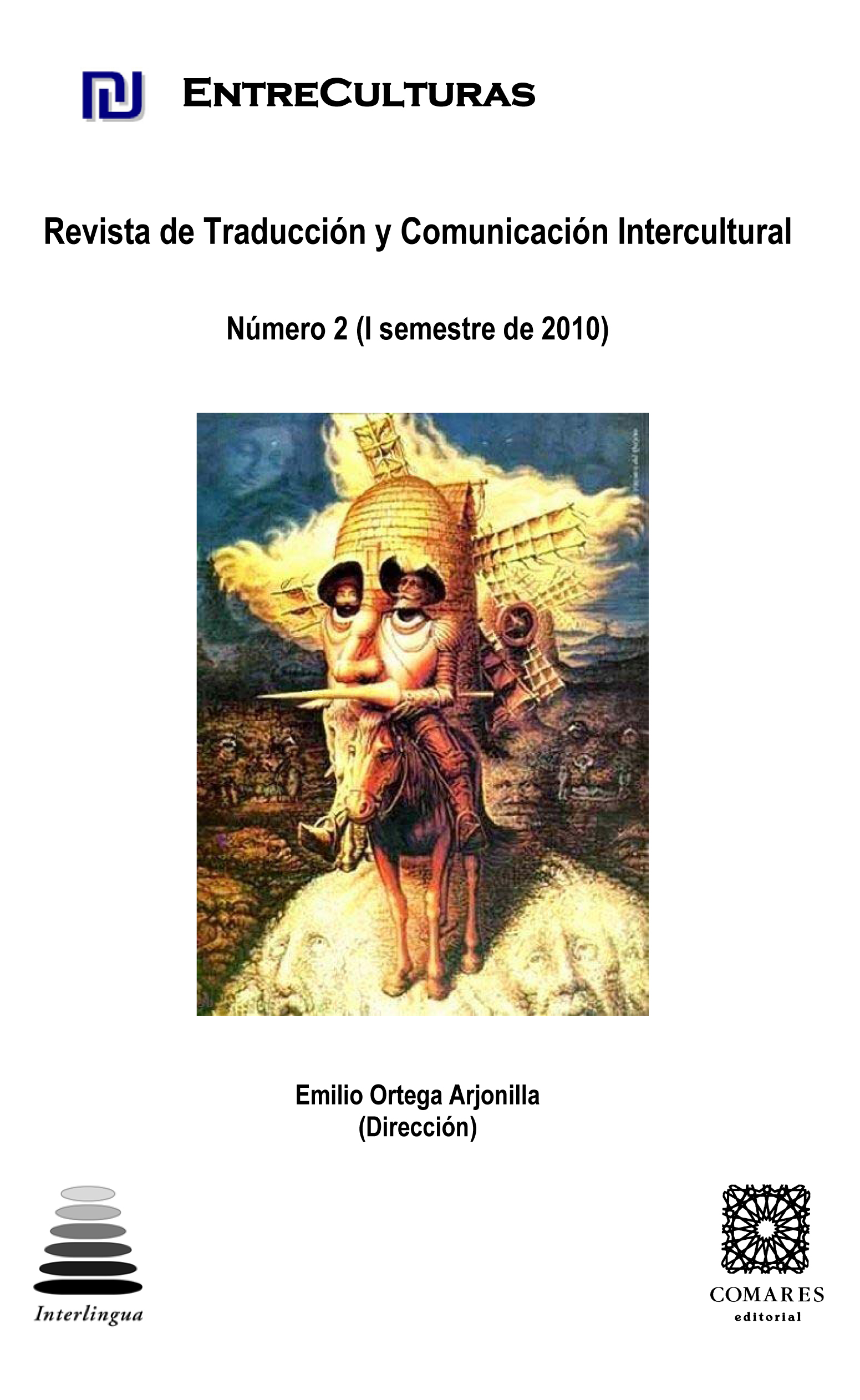EL LENGUAJE ERÓTICO EN LA POESÍA FEMENINA CONTEMPORÁNEA ENTRE ESPAÑA E ITALIA
DOI:
https://doi.org/10.24310/Entreculturasertci.vi2.11759Keywords:
literary relations, Spain-Italy, poetryAbstract
This article is devoted to the erotic language used in poetry in Spain and Italy by feminine contemporary authors. It tries to unfold the stylistic and content based worries of these authors that wrote in the literary world of the second half of the twentieth century. These authors express themselves with audacity in their writings where women are portrayed as observers of men, the object of desire.
Downloads
Metrics
References
CANO BALLESTA, JUAN (ed.) (1990): Poesía española reciente (1980-2000), Cátedra, Madrid.
DEBICKI, ANDREW P. (1994): Historia de la poesía española del siglo XX, Gredos, Madrid.
FAÍLDE, DOMINGO F. (1994): “Cuatro calas en la poesía feminina andaluza contemporánea”, en revista Zurgai, diciembre, Bilbao, págs. 56-60.
GHIGNOLI, ALESSANDRO (2005): “La poesía de Ana María Navales: empatía entre autor y traductor (una traducción al italiano)”, en revista, Lecturas : Imágenes, n° 4, noviembre, Pontevedra, págs. 267-273.
GHIGNOLI, ALESSANDRO (2009): Un diálogo transpoético. Confluencias entre poesía española e italiana (1939-1989). Academia del Hispanismo, Vigo.
LORENZINI, NIVA (1999): La poesia italiana del Novecento. Il Mulino, Bologna.
ROSSETTI, ANA (1985): Indicios vehementes (Poesía 1979-1984). Hiperión, Madrid.
ROSSETTI, ANA (1986): Devocionario. Visor, Madrid.
VALDUGA, PATRIZIA (1982): Medicamenta. Guanda, Milano.
VALDUGA, PATRIZIA (1985): La tentazione. Crocetti, Milano.
VALDUGA, PATRIZIA (1989): Medicamenta e altri medicamenta. Einaudi, Torino.
VALDUGA, PATRIZIA (1991): Donna di dolori. Mondadori, Milano.
Downloads
Published
How to Cite
Issue
Section
License
All contents published in Entre culturas. Revista de traducción y comunicación intercultural are protected under the Creative Commons Attribution-NonCommercial-ShareAlike 4.0 International (CC BY-NC-SA 4.0) license. All about this license is available in the following link: <http://creativecommons.org/licenses/by-nc-sa/4.0>
Users can copy, use, redistribute, share and exhibit publicly as long as:
- The original source and authorship of the material are cited (Journal, Publisher and URL of the work).
- It is not used for comercial purposes.
- The existence of the license and its especifications are mentioned.
There are two sets of authors’ rights: moral and property rights. Moral rights are perpetual prerogatives, unrenounceable, not-transferable, unalienable, imprescriptible and inembargable. According to authors’ rights legislation, Entreculturas. Revista de traducción y comunicación intercultural recognizes and respects authors moral rights, as well as the ownership of property rights, which will be transferred to University of Malaga in open access. The property rights are referred to the benefits that are gained by the use or the dissemination of works. Entreculturas. Revista de traducción y comunicación intercultural is published in an open access form and it is exclusively licenced by any means for doing or authorising distribution, dissemination, reproduction, , adaptation, translation or arrangement of works.
Authors are responsable for obtaining the necessary permission to use copyrighted images.





7.png)
